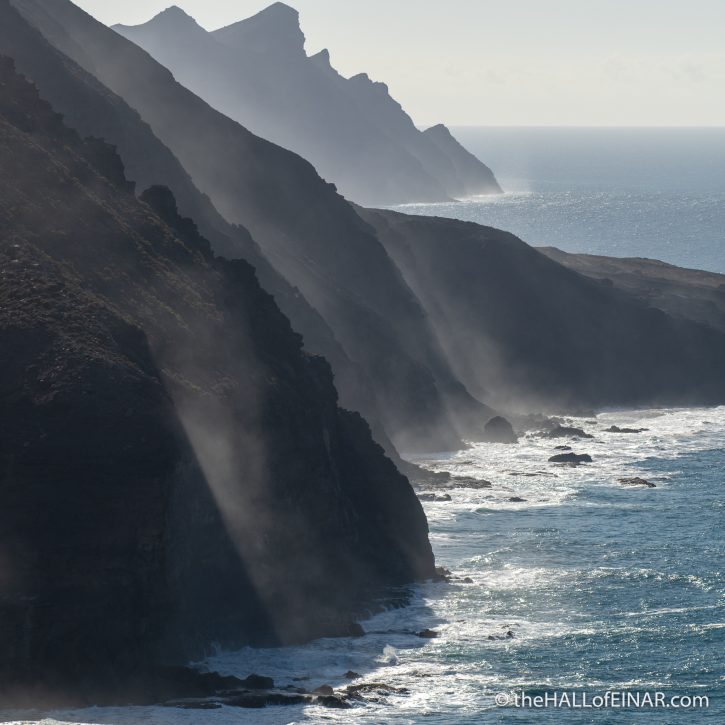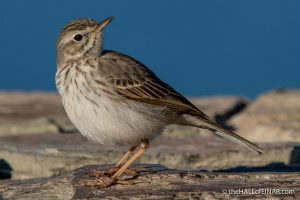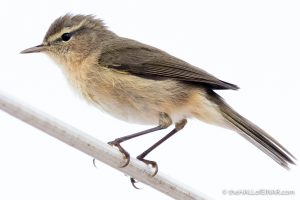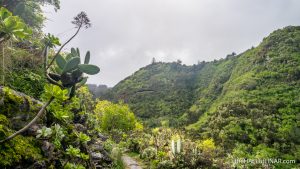Bertholet’s Pipit on Gran Canaria
Clear skies, winding roads, sea spray; what’s not to like? We’re driving on the GC-200 through Parque Natural Tamadaba on Gran Canaria. It’s a road which is regularly in lists of the greatest roads on Earth. It looks astonishing, although you can see far less of it when you’re driving around all those cliff-top hairpin bends.

Having said how beautiful it is, if they tried to build it now it would be such a feat of environmental vandalism. We stop to admire the view and see tall, spiky cactus-like Euphorbias. These are Euphorbia canariensis and live on the narrow coastal belt. It’s the plant symbol of Gran Canaria.

There’s a Pipit calling near the car. It’s just like all the other pipits I’ve seen; brown, speckled, lean, active.

I do I quick search and come back with Berthelot’s Pipit, the endemic species of Gran Canaria. Anthus bertholotii. It’s a relative of the Tawny Pipit, which I’ve never seen. My book says: “Prefers semi-desert stony plains with scattered Euphorbia bushes at low and mid-altitude.” That sounds about right.

Their colonisation of the Canary Islands is quite recent in evolutionary terms: just 2.5 million years ago.
It’s so beautiful I’d love to get some better photographs of it. Maybe in the next couple of days I will.
More from Gran Canaria
 Gran Canaria – the outtakes It's been an incredible few days in Gran Canaria with my son. We've laughed and smiled at so many great… read more
Gran Canaria – the outtakes It's been an incredible few days in Gran Canaria with my son. We've laughed and smiled at so many great… read more Barranco de Barafonso My son has another photograph he'd like to take. He's researched it all and knows the route we'll be taking… read more
Barranco de Barafonso My son has another photograph he'd like to take. He's researched it all and knows the route we'll be taking… read more Pipit on parade Many of the plants on Gran Canaria have given up on having leaves. Some have evolved to simply have stems… read more
Pipit on parade Many of the plants on Gran Canaria have given up on having leaves. Some have evolved to simply have stems… read more The dunes of Maspalomas My son has a specific photograph in mind and he wants to get it. He's a very driven young man.… read more
The dunes of Maspalomas My son has a specific photograph in mind and he wants to get it. He's a very driven young man.… read more Canary Islands Chiffchaff on the balcony We're in Gran Canaria for a few days and we've moved to Agaete, a coastal town. There's a wonderful walk… read more
Canary Islands Chiffchaff on the balcony We're in Gran Canaria for a few days and we've moved to Agaete, a coastal town. There's a wonderful walk… read more Incoming! We've diverted from our route slightly to visit Roque Bentayga on Gran Canaria. Looking down into the ravine, it's great… read more
Incoming! We've diverted from our route slightly to visit Roque Bentayga on Gran Canaria. Looking down into the ravine, it's great… read more A Canary Islands Robin deep in the prehistoric Laurel forest A quick check reveals there's a stretch of original Laurisilva forest on our route through Gran Canaria. That's exciting. How… read more
A Canary Islands Robin deep in the prehistoric Laurel forest A quick check reveals there's a stretch of original Laurisilva forest on our route through Gran Canaria. That's exciting. How… read more Sunset at Mirador del Balcón My son suggests a place he really wants to go in Gran Canaria. It's a viewpoint over the ocean at… read more
Sunset at Mirador del Balcón My son suggests a place he really wants to go in Gran Canaria. It's a viewpoint over the ocean at… read more